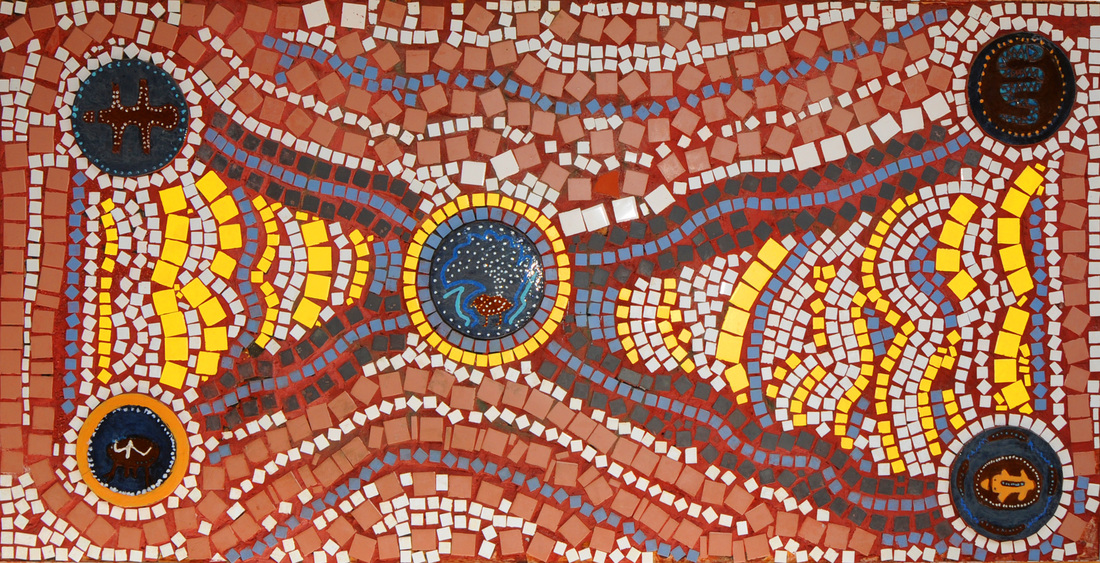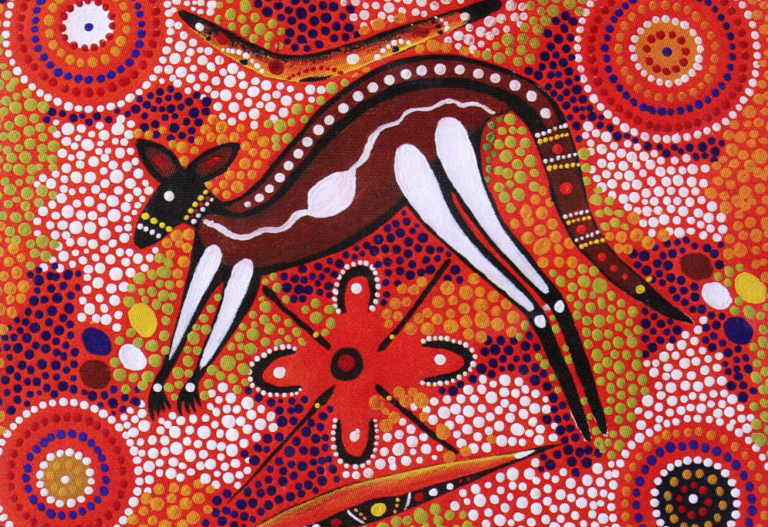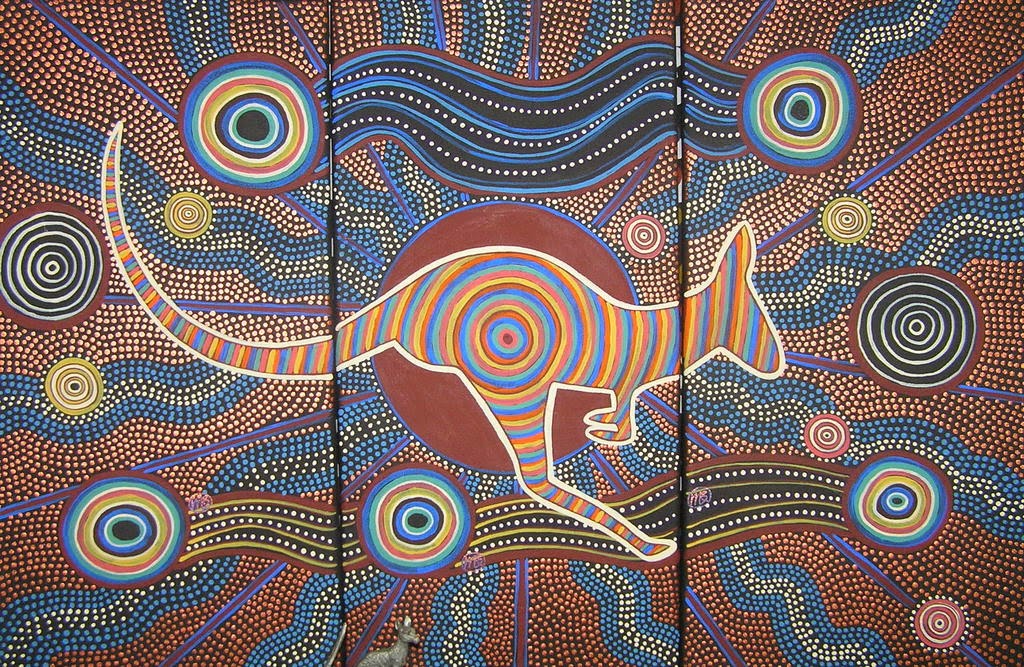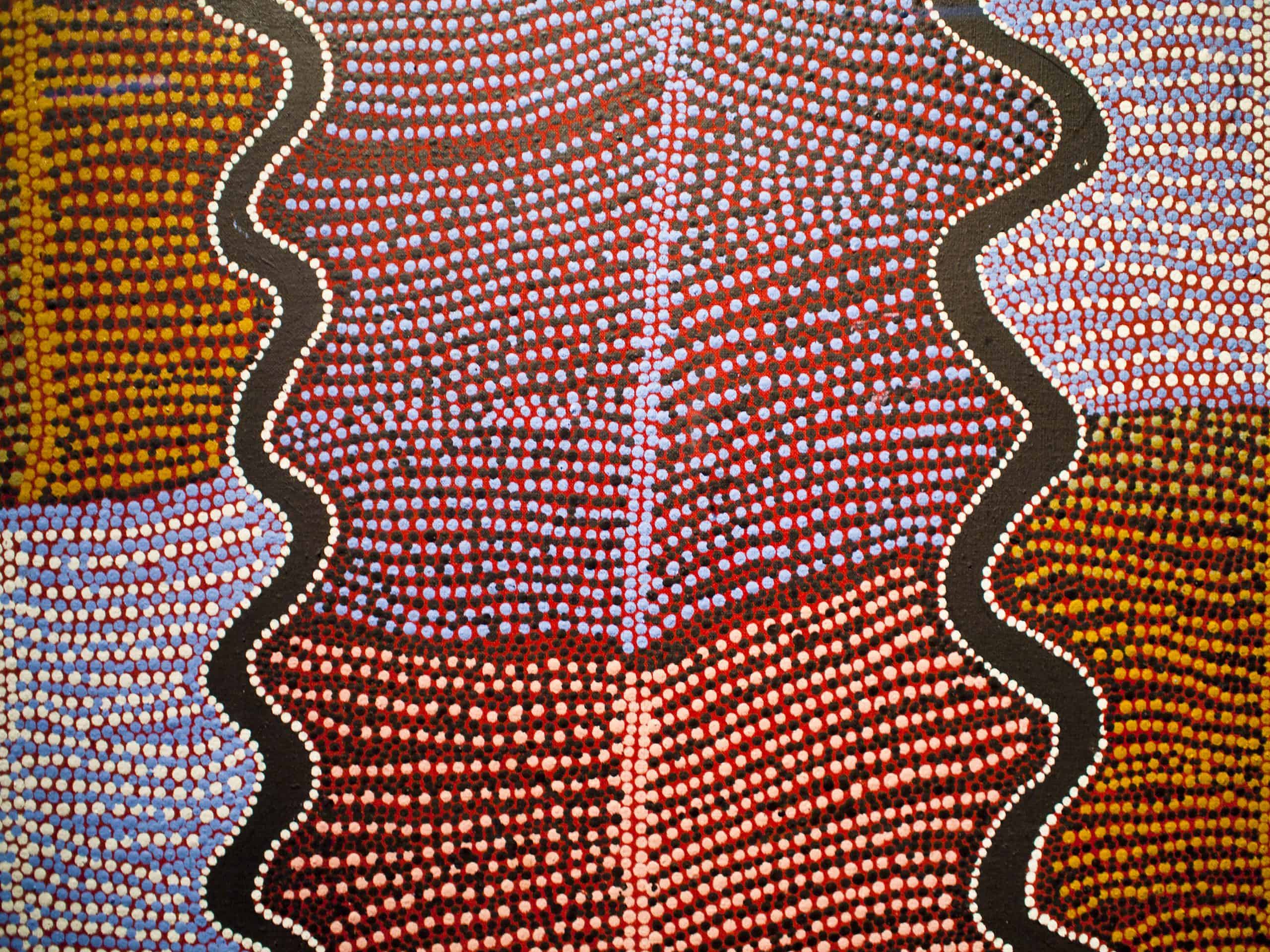
Facts About Aboriginal Art
1) Australian Aboriginal art is regional in style, it gets its form and content from the local Aboriginal culture which is distinctive from one area to the next. 2) Aboriginal art is based on stories and knowledge that is being passed down through the generations - it is a way to communicate meaning and ideas about important cultural and.

Aboriginal Art, History and Culture of the Kamu people. Aboriginal art, Aboriginal, Art
Aboriginal art is the name given to the art made by the native people of Australia. As well as rock paintings, it includes sand painting, rock and wood carving, and paintings on leaves. The oldest Aboriginal art is thought to be about 40,000 years old. The Aborigines may have lived in Australia for about 125,000 years.

Aboriginal painting, Aboriginal art, Aboriginal art symbols
Jessica Poulter 23 October 2016 Aboriginal art is the oldest form of artistic expression in the world. Art cavings found in the Northern Territory's Arnhem Land dates back at least 60,000 years. Using soil and rocks, artists are able to produce carvings, ground designs and paintings.

Aboriginal and Torres Strait Islander Histories and Cultures Insider Guides
In these transformed Galleries, the parallel and, at times, interrelated stories of Indigenous and Canadian art in Canada are brought together in one unforgettable display of masterpieces. Almost 800 paintings, sculptures, prints, photographs, silver, and decorative art objects from across Canada are on view, dating from 5,000 years ago to 1967.

Facts About Aboriginal Art
Fact 1: The Indigenous Aboriginal arts and cultures of Australia are the oldest living cultures in the world! One of the reasons they have survived for so long is their ability to adapt to change. Fact 2: The earliest Indigenous art was paintings or engravings on the walls of rock shelters and caves which is called rock art.
Art. Paper. Scissors. Glue! Aboriginal Dot Paintings
52% of Aboriginal people list occupations in the visual arts and crafts industry as their main job. This compares to 9.7% of non-indigenous people. It's estimated that there is around 5000-6000 Indigenous artists in Australia. Of Australia's 2.6 million international cultural and heritage visitors in 2009, 57% had visited a museum or art.

Australian aboriginal art styles dot and x ray Art handouts, Art room posters, Art basics
Indigenous art is centered on story telling. It is used as a chronical to convey knowledge of the land, events and beliefs of the Aboriginal people. The use of symbols is an alternate way to writing down stories of cultural significance, teaching survival and use of the land. The interpretations of the iconography differ depending on the audience.

What Do Circles Represent In Aboriginal Art Design Talk
Australian Aboriginal artefacts include a variety of cultural artefacts used by Aboriginal Australians. Most Aboriginal artefacts were multi-purpose and could be used for a variety of different occupations. Spears, clubs, boomerangs and shields were used generally as weapons for hunting and in warfare. Watercraft technology artefacts in the.

DNAAG Aboriginal Art Gallery Aboriginal art, Aboriginal dot art, Aboriginal art for kids
The history and origins of Australian Aboriginal art are a testament to the resilience, creativity, and spiritual depth of the Indigenous peoples of Australia. Their art, a vibrant blend of ancient motifs and contemporary themes, serves as a bridge connecting us to the timeless narratives of a land and its first inhabitants.

Australian Aboriginal Arts The Deep Secret Mysteries Weird Interesting Facts
Fact: Aboriginal art is part of the oldest continuous living culture in world history, with Australian Aborigines having settled on the Australian continent somewhere between 60,000 and 80,000 years ago.

Aboriginal Colors Aboriginal art animals, Aboriginal art, Aboriginal
Aboriginal art is based on important ancient stories: even contemporary Aboriginal art, is based on stories (Jukurrpa) and symbols centred on 'the Dreamtime' - the period in which Indigenous people believe the world was created.

Australia's Top End Aboriginal rock art in Kakadu National Park
The development of Indigenous art in Canada is in many ways more complex than that of the relatively recent European settlers, and may be divided into three distinct periods: prehistoric art, contact or "historic" art, and contemporary Indigenous art.

Aboriginal Art, Facts, Aboriginal History & Information on the didgeridoo Didgeridoo Breath Blog
Australian Aboriginal Art is Expensive. Australian Aboriginal Art can cost millions of dollars, and the highest price paid by a buyer for one painting is a whopping amount of two million dollars. That painting is a work of art entitled "Warlugulong" by the creative hands of Clifford Possum Tjapaltjarri.

Aboriginal Art Cosmos And Iconography
Australia - Art, Aboriginals, Colonization: At the time that Europeans arrived, Australia's Aboriginal people had long-standing traditions in the visual arts, including rock art (painted or carved rocks), bark painting, sand sculpture, wood sculpture, and body decoration (usually painting and scarification). Some Aboriginal artists subsequently continued these traditions without alteration.

Aboriginal art of outback Australia Small group tours Odyssey Traveller
Aboriginal artworks are some of the oldest in the world. Rock paintings from the Kimberley's Carpenter's Gap have been dated at 40,000 years old, and the concentric circle art of central Australia is thought to be the oldest continuing art tradition in the world. While there is a long history of Aboriginal and Torres Strait Islander art in.

Aboriginal Dot Painting Kangaroo Aboriginal art, Colorful lion art, Kangaroo art
Indigenous art is as varied as the nations or tribes that exist in North America although there are some regional similarities. The development of Indigenous art in Canada had three distinct periods: prehistoric art, contact or "historic art," and contemporary aboriginal art. From images on rock, animal skin, wood and the use of clay and.